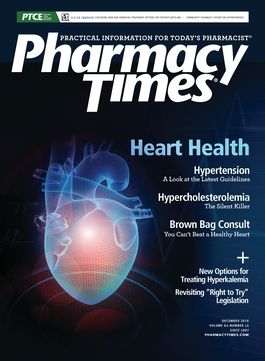Which Left Ventricular Assist Device Is Best?
Advanced heart failure leads to significant limitations, affecting functional status, quality of life, and survival, despite optimal medical treatment with evidence-based therapies.
Advanced heart failure leads to significant limitations, affecting functional status, quality of life, and survival, despite optimal medical treatment with evidence-based therapies.1,2
The gold standard of treatment for patients with advanced heart failure is heart transplantation, but because of a paucity of donor organs, left ventricular assist device (LVAD) use has increased in recent years. LVADs augment the function of a failing heart by providing mechanical circulatory support to restore blood flow and circulation. These devices can be employed while patients are waiting for a heart transplant, or they can serve as permanent alternatives to transplantation, known as destination therapy. Functionally, LVADs decrease cardiac workload and preload and the neurohormonal response seen in heart failure, and they increase systemic circulation and tissue perfusion.
There are 2 types of FDA-approved LVADs: pulsatile and nonpulsatile, also known as continuous-flow LVADs. Pulsatile LVADs mimic the natural rhythmic action of the heart, while continuous-flow LVADs use a motor at fixed speeds, leading to constant ejection of blood to the systemic circulation. This is the reason that patients with continuous-flow LVADs often lack a pulse upon palpation. Continuous-flow LVADs are further divided into 2 categories: axial flow (HeartMate II Left Ventricular Assist Device from Thoratec Corp) and centrifugal flow HeartMate 3 Left Ventricular Assist System from Abbott Laboratories or HeartWare Ventricular Assist System from HeartWare International. These designations refer to the way the blades rotate within the pump. Although LVADs improve mortality and other outcomes, there are many complications associated with these devices, such as gastrointestinal bleeding, pump hemolysis/thrombosis, right ventricle failure, and stroke. Historically, a debate has existed over whether axial- or centrifugal-flow LVADs have a better benefit-to-risk ratio for patients, though few studies have directly compared the therapies.
Rogers and colleagues in a multicenter noninferiority trial evaluated outcomes of 446 patients on destination therapy randomized 2:1 for implantation of either the HeartMate II or HeartWare device.2 The primary endpoint was survival at 2 years, free from a device removal for failure or malfunction or a disabling stroke. The results of this study indicated that patients who received the axial-flow HeartMate II device were more likely to require device replacement, explanation, or urgent transplantation. However, the HeartWare cohort was significantly more likely to present with hemorrhagic or ischemic strokes, right-sided heart failure, and sepsis. Furthermore, treatment with either device was associated with sustained improvements in functional and quality-of-life measures. Therefore, the authors of the study concluded that the centrifugal-flow device was noninferior to the axial-flow device in terms of survival free from device removal for failure or malfunction or a disabling stroke.
Mehra and colleagues conducted a randomized noninferiority and superiority trial comparing the HeartMate 3 and the HeartMate II devices. The trial randomly assigned 366 patients with advanced heart failure to the devices irrespective of the intended goal of support (bridge to transplantation or destination therapy) and evaluated 2-year outcomes.3 The primary endpoint was survival at 2 years free of disabling stroke or survival free of reoperation to remove or replace a malfunctioning device.
The centrifugal-flow pump was found to significantly increase 2-year survival free of disabling stroke or reoperation compared with the axial-flow device HR], 0.46; 95% CI, 0.31-0.69; P <.001). This result was primarily driven by higher rates of reoperation in the axial-flow LVAD cohort. Hemorrhagic and ischemic stroke rates were significantly higher in the axial-flow LVAD cohort, as were rates of pump thrombosis, but disabling stroke rates were not different. Bleeding rates were not deemed to be significantly different between cohorts, though the CI did not cross the prespecified upper limit, and the P value was above the specified cutoff of .05 (HR, 0.71; 95% CI, 0.53-0.96; P = .07). As in the aforementioned study, treatment with either device was associated with similar improvements in quality-of-life measures. The authors concluded that a fully magnetically levitated centrifugal flow pump was superior to a mechanical-bearing axial flow pump in terms of survival free of disabling stroke or reoperation to remove or replace a malfunctioning device.
Several endpoints, such as stroke rates, also differed between the axial- and centrifugal-flow pump cohorts, depending on the study. Based on the trial results, the implantation of centrifugal-flow devices in patients with advanced heart failure has resulted in either better or noninferior outcomes versus the axial-flow devices, primarily because of the lower rates of reoperation. Neither study’s results, however, showed improved mortality with one device versus the other. It seems that centrifugal-flow devices have several benefits over those with axial flow, based on the data, but at this time, it cannot be said that one device is superior to another. A study comparing the 2 commonly used centrifugal-flow devices has not been completed to date but would be a welcome addition to this subset of literature for clinicians and patients alike.
Alexander Kantorovich, PharmD, BCPS, is a clinical associate professor of pharmacy practice at Chicago State University College of Pharmacy in Illinois and a clinical pharmacy specialist at Advocate Christ Medical Center in Oak Lawn, Illinois. Zil-e-Huma Sabir is a PharmD candidate at Chicago State University College of Pharmacy.
References
- Go AS, Mozaffarian D, Roger VL, et al; American Heart Association Statistics Committee and Stroke Statistics Subcommittee. Executive summary: heart disease and stroke statistics—2014 update: a report from the American Heart Association. Circulation. 2014;129(3):399-410. doi: 10.1161/01.cir.0000442015.53336.12.
- Rogers JG, Pagani FD, Tatooles AJ, et al. Intrapericardial left ventricular assist device for advanced heart failure. N Engl J Med. 2017;376(5):451-460. doi: 10.1056/NEJMoa1602954.
- Mehra MR, Goldstein DJ, Uriel N et al; MOMENTUM 3 Investigators. Two-year outcomes with a magnetically levitated cardiac pump in heart failure. N Engl J Med. 2018;378(15):1386-1395. doi: 10.1056/NEJMoa1800866.

